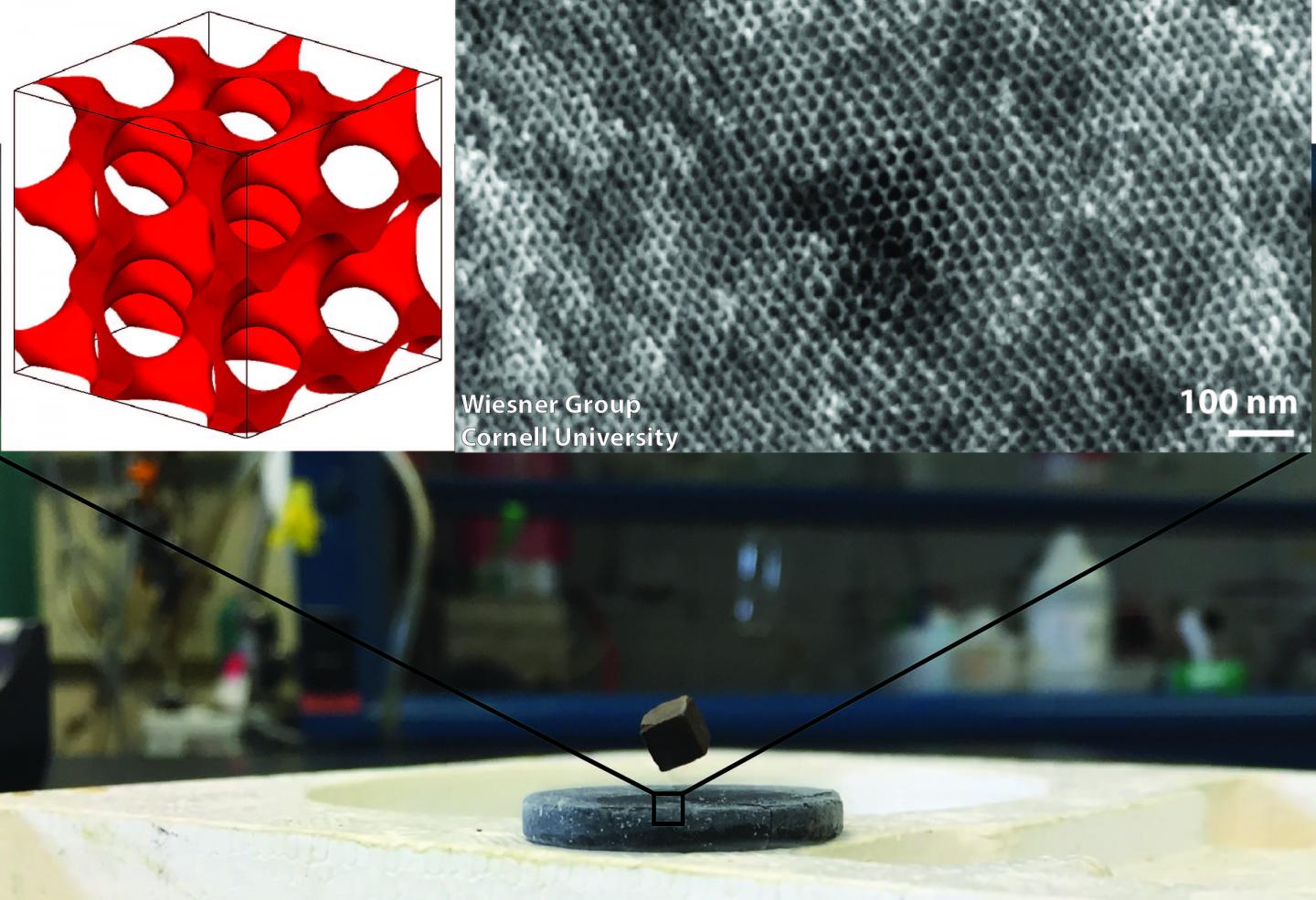
New research in The FASEB Journal suggests that a chimera design of DNA and small DNA with a companion contrast agent to facilitate uptake allows antibodies to cross cell membranes
Scientists have identified a quantitative method to measure changes in biomarkers, which may reduce or eliminate the need for invasive biopsies. The method, described in the February 2016 issue of The FASEB Journal uses a novel chimera design of DNA and small DNA with a companion contrast agent to allow antibodies to cross cellular membranes. Once across these membranes, the tissues being evaluated can be imaged a much greater level of detail than what is possible now.
This could significantly impact the use of gene therapy and stem cell therapy, as well as lead to better diagnosis and treatment of cancer, Alzheimer’s disease, viral infections, HIV, herpes and prion diseases.
“Dr. McCoy does not have to perform a biopsy to know the disorder and cure patients without surgery in Star Trek,” said Philip K. Liu, Ph.D., a researcher involved in the work from the Athinoula A. Martinos Center for Biomedical Imaging at Massachusetts General Hospital in Charlestown, Massachusetts. “This finding avoids biopsy and it makes a ‘McCoy diagnosis’ one step closer to reality.”
To make this advance, Liu and colleagues used three groups of mice. This first group received a complete chimera (antibodies to rhodopsin linked to a reporter agent and small DNA), the second group received a chimera without DNA. A third group had damaged retinas and a less rhodopsin. The first group showed a presence of the chimera in the retina using MRI (in vivo) or TEM (ex vivo). Uptake and targeting of complete chimera were compared in the third group and the first group. Results showed that the third group had significantly less uptake of chimera.
“There will be a time when biopsies are considered primitive,” said Thoru Pederson, Ph.D., Editor-in-Chief of The FASEB Journal, “and as developments in imaging technology and techniques improve our capabilities, the need for invasive, and sometimes painful, biopsies is greatly decreased.”
Learn more: New analysis method may reduce need for invasive biopsies
The Latest on: Invasive biopsies
[google_news title=”” keyword=”invasive biopsies” num_posts=”10″ blurb_length=”0″ show_thumb=”left”]
via Google News
The Latest on: Invasive biopsies
- Prostate Cancer Breakthrough: Urine Test Avoids Unnecessary Biopsieson April 28, 2024 at 9:57 pm
A study in JAMA Oncology reveals that MyProstateScore 2.0, a new urine test analyzing 18 genes, surpasses PSA in detecting significant prostate cancers and could reduce unnecessary biopsies by up to ...
- 2024 Report | European Biopsy Devices Market to Reach US$ 1,074.0 Million by 2032: Enhanced Focus on Early Disease Detection Fuels Growthon April 24, 2024 at 6:41 am
It is projected to grow at a CAGR of 5.99% from 2024 to 2032. The analyst forecasts it to reach US$ 1,074.0 Million by 2032. The increasing emphasi ...
- Sniffing Out Disease With “Scentprints”on April 22, 2024 at 4:59 pm
Detection of these signatures can offer a novel approach to confirm the presence of a disease early, ensuring timely treatment and, in some cases, avoiding invasive biopsies. Technology Networks spoke ...
- New Urine Test for Prostate Cancer May Help Reduce Unnecessary Biopsieson April 22, 2024 at 4:19 am
A prostate cancer biomarker test that utilizes genes indicating high-grade prostate cancer appears highly accurate.
- If Biopsy Needed for ILD Diagnosis, Start With Less-Invasive Option, Trial Suggestson April 20, 2024 at 5:00 pm
Opens in a new tab or window When a biopsy is needed to diagnose interstitial lung disease (ILD), starting with a less-invasive approach can reduce patient burden while still achieving a ...
- Biopsy Devices Market Analysis, Size, Global Forecast Report 2024-2030 - Increased Demand for Minimally Invasive Diagnostic Techniqueson April 19, 2024 at 1:10 am
The "Biopsy Devices Market, Size, Global Forecast 2024-2030, Industry Trends, Share, Growth, Insight, Impact of Inflation, Top Companies Analysis" report has been added to ResearchAndMarkets.com's ...
- Urine Test Might Help Men Skip Prostate Biopsieson April 19, 2024 at 12:00 am
“Four of 10 men who would have a negative biopsy will have a low risk MPS2 result and can confidently skip a biopsy," Wei said. "If a man has had a biopsy before, the test works even better," he added ...
- Urine test may determine prostate cancers' level of aggressionon April 18, 2024 at 8:00 pm
Right now, an invasive biopsy is the only way to answer that query, but researchers say they've developed a urine test that could do the job instead. Advertisement The test, called ...
- Simple urine test ‘could help avoid unnecessary prostate cancer biopsies’on April 18, 2024 at 4:00 am
A urine test which looks at 18 genes linked to aggressive prostate cancer could help men with the slow-growing form of the disease avoid unnecessary invasive biopsies, according to scientists.
- Simple urine test ‘could help avoid unnecessary prostate cancer biopsies’on April 17, 2024 at 5:00 pm
A urine test which looks at 18 genes linked to aggressive prostate cancer could help men with the slow-growing form of the disease avoid unnecessary invasive biopsies, according to scientists.
via Bing News










